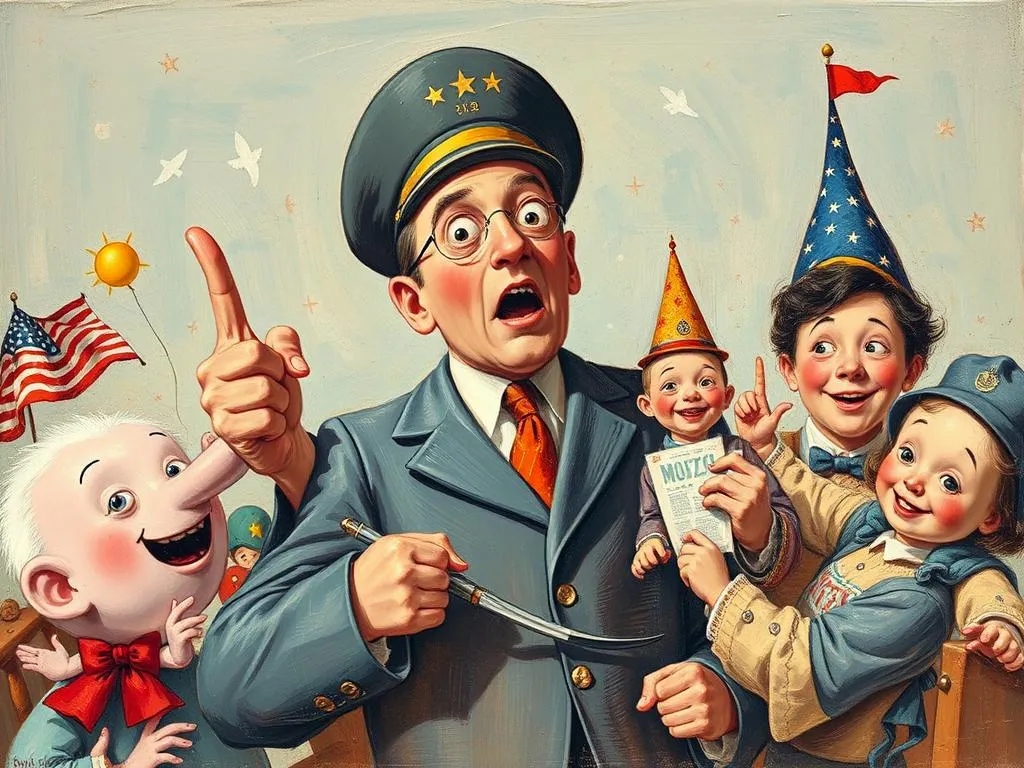
Have you ever flipped through a magazine and stumbled upon an image or headline that made you pause, wondering about its deeper meaning? Just like dreams, propaganda magazine covers are often laden with symbolism and hidden messages. They can reflect our fears, desires, and cultural narratives, whispering truths that resonate in our subconscious. As you uncover these hidden messages, you may find that they mirror your own life experiences, offering insights into your personal journey.
While you may think of magazine covers as mere marketing tools, they can serve as powerful windows into your psyche. By analyzing the symbolism present in these covers, you can discover how they relate to your emotional landscape and societal influences. Let’s explore this intriguing intersection of art, psychology, and personal growth, as we delve into the world of propaganda magazine covers and the messages they convey.
Covering the Truth: Symbols in Propaganda
When examining propaganda magazine covers, the symbols used are often exaggerated or stylized to evoke a strong emotional response. These symbols may include colors, imagery, and specific phrases that resonate with the audience’s collective consciousness.
For instance, the color red often signifies urgency or danger, while blue can convey calmness or trust. In propaganda, these colors are used strategically to manipulate the viewer’s emotional state. The interplay of colors can evoke a sense of fear or safety, encouraging a particular viewpoint or action.
Imagery, too, plays a crucial role. For example, a cover featuring a globe can symbolize global unity or impending doom, depending on the surrounding context. The use of bold fonts and alarming headlines can create a sense of urgency, compelling the reader to act or align with a certain ideology.
Icons and figures can serve as powerful symbols as well. A soldier depicted in a heroic pose can instill feelings of patriotism, while an oppressive figure can invoke fear and resistance. These portrayals can significantly influence public perception, shaping the narrative around political or social issues.
Ultimately, understanding these symbols can illuminate your own beliefs and values. Are there certain colors or images that resonate with you? Reflecting on these symbols can help you identify what messages you’re subconsciously absorbing and how they might influence your thoughts and actions.
Unpacking the Layers: Scenarios to Ponder
Understanding the hidden messages in propaganda magazine covers can lead to profound personal insights. Here are a few scenarios to consider, each illustrating a different aspect of how these covers interact with our subconscious:
-
The Fearmongering Cover: Imagine a cover depicting a looming threat, like a storm or an invasion. You find yourself drawn to this cover, feeling a mix of anxiety and curiosity. This scenario might mirror your own fears in life—perhaps you’re facing a daunting challenge at work or a personal relationship that feels precarious. Reflect on how this fear might be influencing your decisions and outlook.
-
The Utopian Vision: Picture a cover showcasing a vibrant, harmonious community enjoying life together. You feel a sense of longing as you gaze at this image. It could signify your desire for connection and belonging. Ask yourself: What steps can you take to create more meaningful relationships in your life?
-
The Provocative Call to Action: Envision a cover with a striking image and an urgent call to action, like “Join the Movement!” You feel an overwhelming sense of responsibility to act. This scenario might reflect your growing awareness of social issues or injustices. Consider how you can channel this energy into positive change—whether that’s through volunteering, advocacy, or simply educating yourself and others.
-
The Nostalgic Throwback: Imagine a cover that evokes nostalgia, perhaps featuring a beloved cultural icon from your childhood. You’re flooded with memories and emotions. This cover may symbolize your yearning for simpler times or a desire to reconnect with parts of yourself that you’ve neglected. Reflect on what those memories mean to you and how you can integrate those feelings into your current life.
-
The Dystopian Warning: Picture a cover filled with dark imagery, depicting a bleak future. You feel a chill as you absorb the message. This scenario might resonate with your fears about the state of the world or your personal circumstances. It’s important to recognize these feelings and consider how they might be affecting your mental health. What actions can you take to foster hope and resilience in your own life?
Each of these scenarios invites you to look within and consider how the messages conveyed in propaganda magazine covers reflect your own experiences, emotions, and aspirations. By recognizing these connections, you can gain a clearer understanding of your current mindset and the influences that shape it.
The Journey of Reflection: Personal Growth Through Understanding
As we navigate the complex world of propaganda messages, it’s essential to consider how this understanding can foster personal growth. By decoding the hidden meanings behind these covers, you can embark on a journey of self-discovery and empowerment.
Self-awareness is the first step to growth. By recognizing the symbols and themes that resonate with you, you can better understand your motivations and fears. This awareness allows you to make conscious choices rather than reacting impulsively to the messages around you.
Next, consider the impact of societal narratives on your identity. Propaganda often reflects the collective fears and aspirations of a society. By examining these influences, you can differentiate between external pressures and your authentic self. This clarity can empower you to align your actions with your true values rather than those imposed by others.
Incorporating mindfulness practices into your routine can also deepen your understanding of these messages. Take time to reflect on your feelings when you encounter certain symbols or themes in propaganda. Journaling can be a powerful tool for processing these emotions and uncovering the underlying beliefs that shape your worldview.
Finally, consider how you can use your insights for positive change. Whether it’s advocating for social issues, creating art that reflects your perspective, or simply engaging in thoughtful conversations with others, your awareness can inspire action. Remember, knowledge is power, and by understanding the hidden messages in propaganda, you can become an active participant in shaping the narrative rather than a passive consumer.
As you reflect on the powerful connection between propaganda magazine covers and your personal journey, consider this: When you peel back the layers of meaning, what truths do you uncover about yourself and the world around you? The exploration of these hidden messages is not just about understanding propaganda; it’s about understanding the intricate tapestry of your own life and the role you play in it. Embrace the journey of self-discovery, and let the insights you gain illuminate your path forward.







